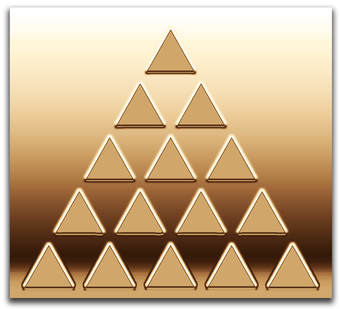
If the interval - the resulting combination of 2 notes - is considered the foundation of the melodic line, then the triad is certainly the backbone of Western harmonic function.
Because triads have such strong tonal gravity, they are a powerful means of creating colorful melodic lines – both “inside” or “outside” of a given key center.
It's therefore of primary importance for the improviser to be comfortable and proficient with all aspects of triads, including their inversions and permutations. This should lead to the eventual understanding of how they function, not only as the bottom part (root, 3rd & 5th) of an extended chord (7th, 9th, 11th & 13th), but as the extensions themselves.
Although this might sound like a pretty basic topic to an advanced improviser, it's always a good idea to review the subject from time to time, as well as to include triad sequences as part of a daily practice or warm-up routine.
It's amazing what one might (re)discover.
 RSS Feed
RSS Feed









